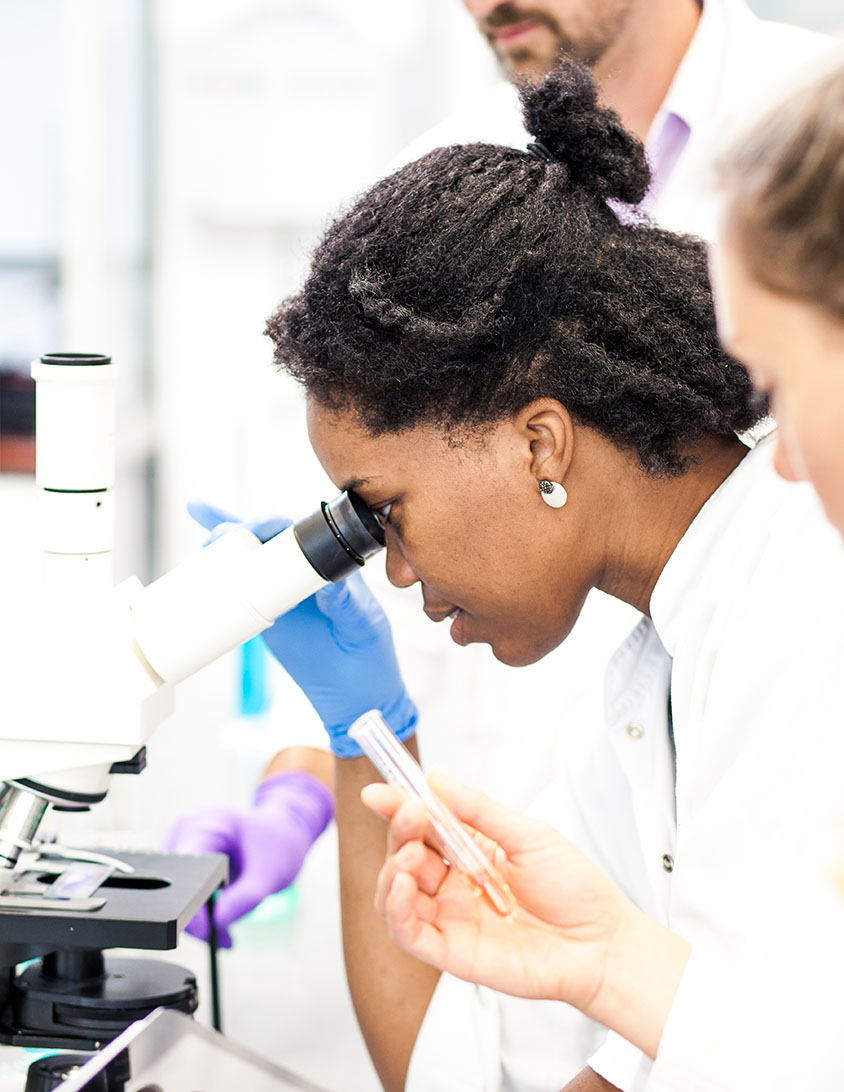Congenital Myasthenic Syndromes (CMS)
Causes/Inheritance
What causes congenital myasthenic syndromes (CMS)?
At the normal neuromuscular junction, a nerve cell tells a muscle cell to contract by releasing the chemical acetylcholine (ACh). ACh attaches to the ACh receptor — a pore or "channel" in the surface of the muscle cell — twisting it open and allowing an inward flux of electrical current that triggers muscle contraction. These contractions enable someone to move a hand, dial the telephone, walk through a door or complete any other voluntary movement.
CMS results from flaws in genes necessary for making the ACh receptor or other components of the neuromuscular junction. More than 35 genes have been associated with CMS, including CHRNE, RAPSN, CHAT, COLQ, DOK7. These genes provide instructions to produce proteins that are involved in signaling at the neuromuscular junction.
The many types of CMS are grouped into three main categories named for the part of the neuromuscular junction that’s affected: presynaptic (the nerve cell), postsynaptic (the muscle cell) or synaptic (the space in between). Some proteins can affect both presynaptic and postsynaptic regions of the junction.
Presynaptic CMS occurs when the nerve does not release enough ACh to activate muscles. This can occur due to mutations in genes involved in the synthesis, packaging, or release of ACh. For example, mutations in the CHAT gene, which encodes choline acetyltransferase (the enzyme that synthesizes ACh), lead to reduced availability of ACh at the neuromuscular junction. This results in a poor signal between nerve and muscle cells, leading to muscle fatigue and weakness.
Postsynaptic CMS involves abnormalities at the level of the ACh receptors on the muscle cell membrane. In the subtype known as AChR deficiency (caused by mutations in genes like CHRNE), there are too few receptors available to respond to ACh, which diminishes the efficiency of nerve to muscle signaling. In fast-channel CMS, the ACh receptors open and close too rapidly in response to ACh for the muscle cell to respond to the signal. In slow-channel CMS, the ACh receptors remain open for too long, letting in excess calcium into the muscle cell. This can lead to muscle damage over time.
Synaptic CMS is caused by abnormalities within the synaptic space itself, most notably a deficiency of the enzyme acetylcholinesterase (AChE), which is responsible for breaking down ACh after it has been released. When AChE is absent or dysfunctional (as caused by mutations in genes such as COLQ), ACh accumulates in the synaptic space and continues to stimulate the ACh receptors. This overstimulation can lead the receptors to stop responding over time.
How is CMS inherited?
With the exception of slow-channel CMS and some presynaptic CMS, the inheritance pattern for the types of CMS described here is autosomal recessive. This means that it takes two copies of the defective gene — one from each parent — to cause the disease.
Slow-channel CMS and some forms of presynaptic CMS are inherited in an autosomal dominant manner. This means that one copy of a defective ACh receptor gene is enough to cause the disease, so an affected parent has a 50% chance of passing the disease on to a child.
Additional reading
- Abicht A, Müller JS, Lochmüller H. Congenital Myasthenic Syndromes Overview. 2003 May 9 [Updated 2021 Dec 23]. In: Adam MP, Feldman J, Mirzaa GM, et al., editors. GeneReviews® [Internet]. Seattle (WA): University of Washington, Seattle; 1993-2025. Available from: https://www.ncbi.nlm.nih.gov/books/NBK1168/
- Ohno, K., Ito, M. & Ohkawara, B. Review of 40 genes causing congenital myasthenic syndromes. J Hum Genet (2025). https://doi.org/10.1038/s10038-025-01355-9
Last reviewed: August 2025

